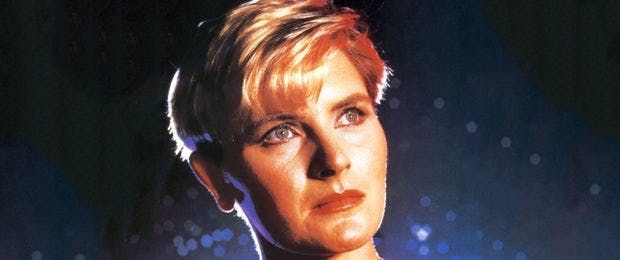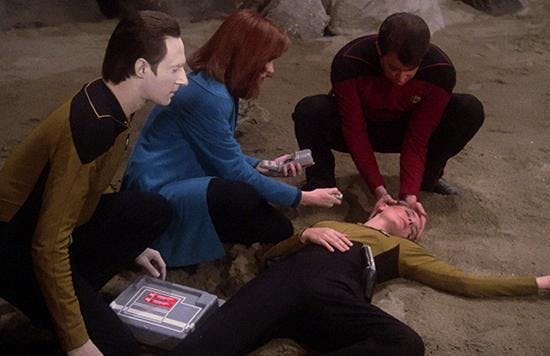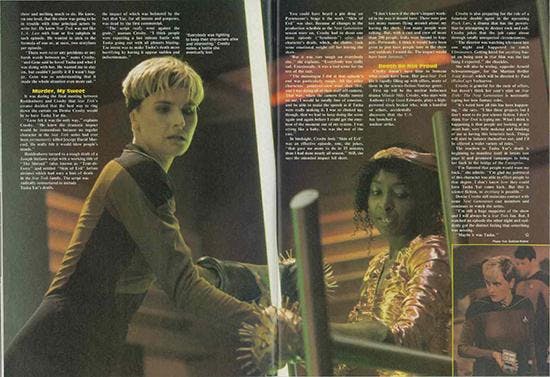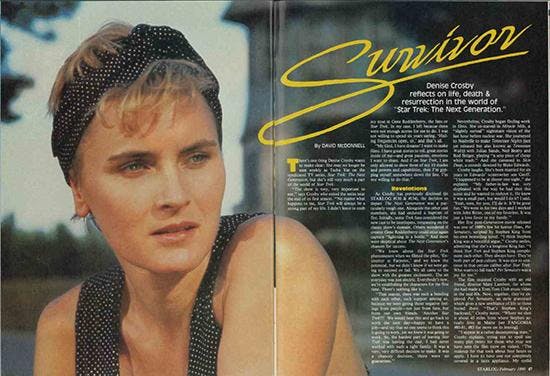Published Aug 13, 2015
Life, Death, & Tasha Yar
Life, Death, & Tasha Yar

Weeks before the fall 1987 premiere of Star Trek: The Next Generation, one of its publicists assured me as to just who the show's two "breakout" characters would be, the ones audiences would immediately embrace: Captain Jean-Luc Picard and Lieutenant Tasha Yar. As any fortuneteller might foresee, predictions are an iffy business. Instead, of course, Picard and two other Lieutenants (Data and Worf) emerged as The Next Generation's breakout personalities.Nonetheless, I had dutifully placed our initial Starlog interview requests for the recommended duo, although since we wanted to talk to everybody, just who went first didn't much matter. And other cast members ended up on tape and in print earlier. By the time Denise Crosby's number came up, it turns out Tasha Yar's had, too.




